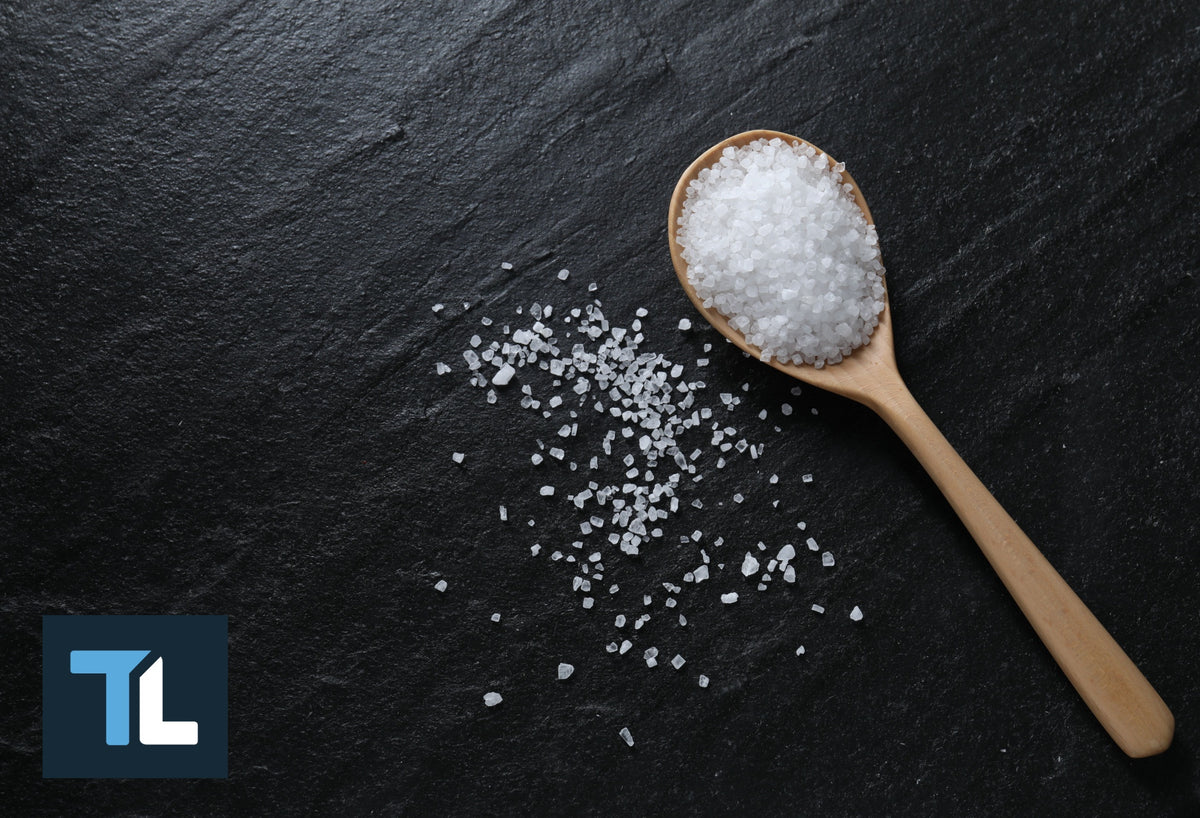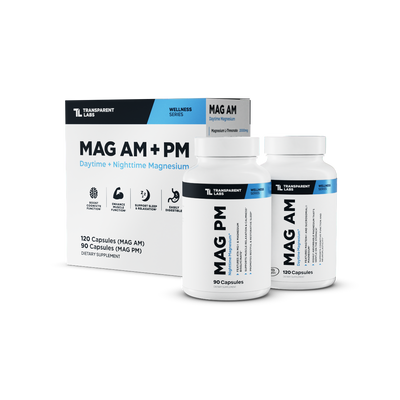Are Current Sodium Intake Guidelines Too...Low?

It has been playfully said that salt (sodium) is what makes things taste bad when it's not in them. While sodium is an essential electrolyte mineral and taste enhancer, it's abundance in modern diets has raised controversy among public health officials and researchers.
Traditional sodium intake recommendations emphasize that 2,000 to 2,500 mg per day is ample for most adults and lowers the risk of hypertension and cardiovascular diseases [1]. However, a counterculture-esque movement is underway with some people arguing the sodium intake guidelines are far too low and misleading, and that most adults should consume upwards of 5,000 to 6,000 mg per day.
The contentious debate between both sides often centers around what constitutes an appropriate sodium intake level and whether high consumption is indeed detrimental. So, we're going to a deep dive on sodium intake and clarify the potential consequences of "low-salt" and "high-salt" diets based on current evidence.
Fast Facts on Sodium Intake
Sodium is a ubiquitous electrolyte mineral that's integral to human physiology. It is the most abundant mineral in the extracellular fluid (and blood serum) and works in conjunction with other electrolytes, notably potassium, to maintain fluid balance and regulate membrane potentials in the body [2].
The vast majority of sodium found in foods comes from sodium chloride, which is generically called "table salt," "common salt," or simply "salt." However, the term "salt" broadly refers to ionic compounds that dissociate into ions when dissolved in water, and they don't always include sodium or chloride. In other words, sodium is not a salt, but sodium (ion) is a component of various salts.
The average American consumes about 3,600 milligrams of sodium per day [3], well above the recommended limit of 2,300 milligrams set by public health organizations such as the World Health Organization (WHO) and Center for Disease Control (CDC).
Emerging studies indicate that excessively low sodium intake may also pose health risks. Still, critically low sodium intake is quite rare and much less of a concern than high sodium consumption [4].
The notion that increasing sodium intake above recommended limits for health purposes directly contradicts decades of empirical data [5]. Studies that show a protective health effect from consuming 5,000+ milligrams of sodium per day are vastly outweighed by those showing a negative effect [6].
Moreover, the paucity of research supporting higher sodium intakes is riddled with methodology issues and conflicts of interest, and journalists have (mis)interpreted these data to espouse the idea that reducing sodium intake increases the risk of cardiovascular events—which is an outright myth [7, 8].
Low Serum Sodium (Hyponatremia) vs. High Serum Sodium (Hypernatremia)
Hyponatremia (low sodium levels), defined as a serum sodium concentration below 135 mmol/L, is the most common electrolyte imbalance seen in clinical practice [9].
While many people presume this arises from inadequate sodium intake, that's not necessarily the case; hyponatremia commonly arises from various etiologies independent of sodium consumption, including excessive water retention, hormonal imbalances (e.g. adrenal insufficiency), renal dysfunction, diuretic use, or disorders like the syndrome of inappropriate antidiuretic hormone secretion (SIADH).
Clinically, hyponatremia manifests with symptoms ranging from mild, such as headache and nausea, to severe neurological disturbances, including confusion, seizures, and potentially life-threatening cerebral edema.
Conversely, hypernatremia (high sodium levels), characterized by a serum sodium concentration exceeding 145 mmol/L, is less common but poses significant health risks. Hypernatermia is often a result of a water deficit rather than excess sodium intake, and its primary causes include lack of fluid intake, excessive water loss through perspiration, or conditions such as diabetes insipidus ("water diabetes").
Clinically, hypernatremia is marked by symptoms of central nervous system disturbances, including lethargy, weakness, irritability, and in extreme cases, coma. The body's compensatory mechanisms may fail in the event of rapid or severe onset, leading to neuronal shrinkage and vascular damage.
A key note here is that low or high sodium intake is rarely the underlying cause of dysregulated sodium levels in the serum, which represents an acute imbalance that can be rapidly corrected in most instances. The body is quite adept at keeping sodium levels in a normal/healthy range regardless if sodium intake is reduced or elevated. The health implications of chronic excess sodium intake are more so tied to inflammation and the cardiovascular system [10, 11].
Low vs. High Sodium Intake: Effects on the Cardiovascular System and Gut
Since elevated blood pressure is a primary risk factor for cardiovascular diseases (CVDs), including hypertension, heart attack, and stroke, sodium is tightly linked to heart health. Mechanistically, sodium influences vascular resistance and aldosterone secretion, which can lead to fluid retention and increased cardiac output, thereby elevating blood pressure.

This physiological response aligns with findings from controlled trials and meta-analyses, which suggest that sodium reduction can lead to significant improvements in blood pressure levels [13]. Conversely, a recent large-scale study found a significant positive linear association between sodium intake and blood pressure levels, indicating that systolic and diastolic blood pressure increases incrementally as sodium intake increases beyond a "normal intake" range (2,000 - 4,000 mg per day) [14].
The gastrointestinal system is also affected by sodium intake, with recent studies finding that excess dietary sodium alters the gut microbiota composition and contributes to inflammatory responses linked with cardiovascular risk [15, 16]. The integrity of the gut barrier could be compromised, influencing systemic inflammation and, subsequently, cardiovascular health.
Further studies are required to refine our understanding of the precise interaction between sodium intake levels, the cardiovascular system, and the gut. While the current evidence is substantial, gaps and uncertainties still exist.
How Much Sodium is Enough: Finding the "Sweet Spot"
Excessive intake of any essential nutrient is problematic and this seems to be particularly the case for sodium since a high intake makes it the nutrient most strongly associated with mortality. Individual variability in sodium requirements complicates establishing a one-size-fits-all guideline.
Factors such as age, sex, genetics, physical activity levels, and health conditions (e.g. hypertension and kidney disease) all play critical roles in determining the appropriate sodium intake for an individual. For example, an elite athlete that's spending three hours per day training in a hot and humid environment will need significantly more sodium, and electrolytes as a whole, than someone who lives a sedentary lifestyle.
Identifying the optimal range of sodium intake, often referred to as the sweet...err, "salty spot," depends on the aforementioned factors, as well as your specific dietary needs/restrictions. Obviously, if you're actively trying to lower blood pressure and reduce cardiovascular risks, odds are a modest sodium intake (~2,000 mg/day) is ideal.
However, some people may need 4,000-5,000 mg of sodium per day to feel and function their best. Of course, sodium is just one nutrient of many essential nutrients our body needs. Increasing your potassium intake is generally a wise decision regardless of your sodium intake, as this will help maintain a proper ratio of sodium to potassium in the body.









